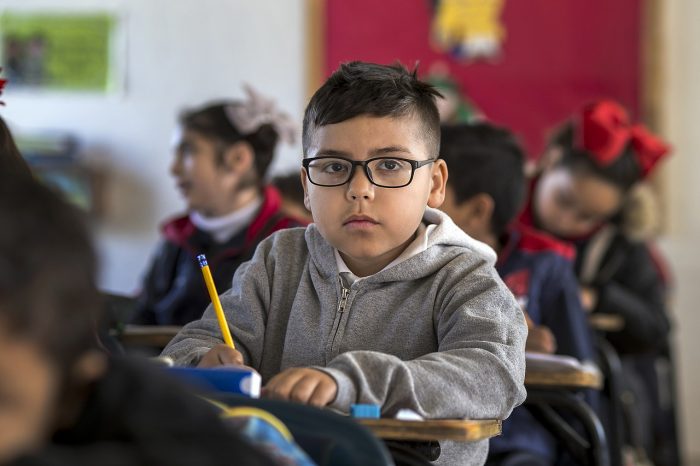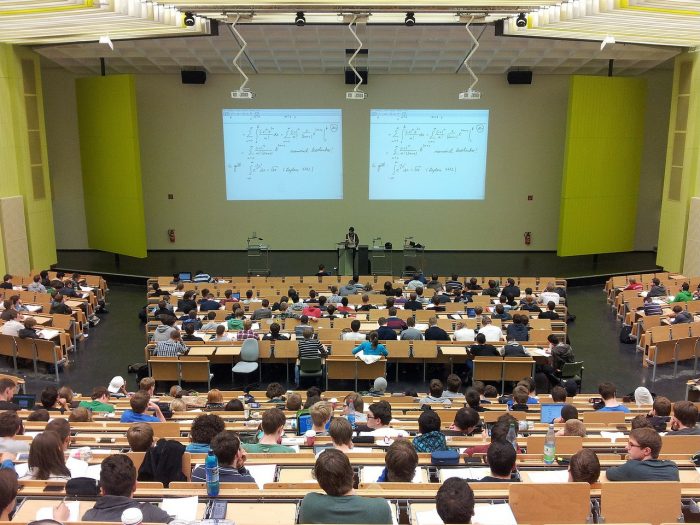
How many weeks are there in an average school year? The instruction time per school year varies from state to state and sometimes district to district. In general, though, there are somewhere between 175 to 180 school days per school year. This comes out to somewhere between 25 and 25.7 full school weeks a year. This number fluctuates not only from state to state but also between grade levels.
A Closer Look At Number Of School Days Per Year
In the United States, public K-12 school systems have their instruction time set by the state they are located in. A general guideline is approximately 36 weeks of instruction a year, which comes out to about 180 school days a year. Keep in mind that most schools have the weekends off, so there are only five days of instruction in these 36 weeks. If there were full weeks of instruction it would work out to between 25 to 25.7 full weeks of school a year.
“Education is the key to unlocking the world, a passport to freedom.” — Oprah Winfrey
The above guideline for days of school instruction can vary between state to state. The National Center for Education Statistics collects statistics about the average number of instruction days in a year for every state. Examining these averages reveals that while the numbers vary, they do not vary wildly, all being fairly close to about 180 school days a year. Statistics for the 2007-2008 school year revealed that Colorado had the fewest instruction days overall, with only 171 average school days a year. Meanwhile, Florida had the most instructional days, with 184 school days a year. Around 15 states have exactly 180 average school days a year.
In terms of when school starts, most states leave this up to the individual school district to decide. However, some states, like Michigan do have mandates governing when schools can start and end, with Michigan having a mandate that no school can start earlier than Labor Day.
Instruction Time Per Year

Photo: ernestoeslava via Pixabay, CC0
Just as the number of school days per year fluctuates between states, so does the amount of instruction time/hours per year. For instance, Alabama has 180 school days and 1080 in school hours of instruction. Meanwhile, Michigan has 180 school days but 1098 in school hours of instruction. North Carolina has 185 average school days but only 1,025 hours of instruction on average. Hours of instruction may vary by grade. For instance, Arizona has grades 4 – 6 have 890 instruction hours a year, while 7-8 have 1000 and grades 9 – 12 have 720 hours.
On average, school children in America spend approximately 1000 hours a year in school, which translates to about 6 hours a day spent in school. Studies suggest that the schools that have their students spend more “time on task” see their students perform better. In addition, when more snow days occur scores on test results decrease. Some analysts argue that policies should be updated to increase instruction time and optimize how current learning time is currently spent. While expectations of American schools have risen dramatically over the past few decades, as to how schools are expected to prepare citizens and workers, instruction time looks much like it did a century ago.
How The US Compares To Other Countries In Instruction Time

Photo: coyot via Pixabay, CC0
A common public perception is that United States schools spend less instruction time than many other countries do, countries like India and China. Specific claims have been made that the US has approximately 25 to 30% less instruction time than China does. However, an analysis of China’s instruction time compared to US instruction time seems to refute this idea. Data taken from the OECD and the World Data on Education were compared together to find that students from India and China are not required to sit more instruction time than US students.
While it is difficult to get exactly comparable comparisons between the instruction time of different nations, because the statutes of different countries may not explicitly defined instruction time, an idea of how instruction time compares can be gained by looking at data gathered by the World Data on Education, which uses similar standards for countries around the world. Comparisons to the US school systems were based on instructional data from California, New York, Florida, Texas, and Massachusetts – five states which have a significant portion of the US population enrolled.
India has approximately 800 hours of instruction per year for students who are at the elementary school level, while there are 900 hours for a student in New York, 840 for elementary students in California, 900 for elementary students in Florida, around 1260 for students in Texas and 900 hours for a student in Massachusetts. For middle school students, grades 6 to 8, India and most US states had a comparable approximate 1000 hours of instruction. Texas had 1216 average hours of instruction, New York had 990 hours, and Massachusetts also had 990 hours. Students in India may attend more days of school than students in the US, but since instructional days tend to be shorter, the after-hours of instruction tend to average out.
It is more difficult to compare the amount of time students in the US spend in school to the amount of time spent in school by Chinese students. This is because the data collected on Chinese school systems aren’t as clear as the data collected on school systems in India. The number of days students attend school in China varies according to the region of the country. However, the OECD reports that the average number of instruction weeks in China is 35 weeks, compared to the 36 weeks that the average US state has. It is possible that the Chinese students are attending school more often than US students because some Chinese students attend their school for six days a week in contrast to the five days a week in the West.
However, just because students in China may attend more days of school, they aren’t necessarily receiving more hours of instruction. An analysis done by the Center for Public Education has found that primary grade students, those in grades 1 to 5, in China have approximately 900 hours of instruction per year, which is similar in most respects to schools found in Texas, California, New York, Florida, and Massachusetts. For grades 6 to 8, Chinese students have approximately 1000 hours of instruction a year, a figure which again is comparable to the hours of instruction found in most US states.
“Let us remember: One book, one pen, one child and one teacher can change the world.” — Malala Yousafzai
While China and India may not spend more time than the United States on education, what about other countries such as Korea, Finland, Canada, Japan, England, Germany, France, and Italy? Once more, and analysis of the data collected by the OECD provides some interesting insights.
At the elementary school level, students in France tend to spend about 926 hours in school on average, while there are about 608 instructional hours on average in Finland. This is compared to the 900 hours of compulsory education in Texas, California, Massachusetts, and New York. Finland scores highly in almost every category of international educational assessment, despite the fact that they spend the fewest hours in school out of the countries listed above. Even Vermont, which has the fewest numbers of instructional hours out of any state in the US (700 hours) requires more instructional hours than Finland. South Korea is another high achieving country, and it spends only about 612 hours of instructional time on its elementary students.
At the middle school level, three different states in the US have instructional times that rank near the top of the list of education hours required in all industrialized nations since and states. New York mandates 990 instructional hours at the middle school level, while Texas mandates 1260, and Massachusetts 990. This is compared to Finland, which averages 777 instructional hours and Italian schools which average 1001 hours. Once more, Finland is a top performer in education achievement. The OECD data shows an average of 886 instructional hours at the middle school level, and the states of Florida and California both ranked slightly above this average at 900 hours a year. Japan and South Korea also require fewer instructional hours than most states in the US, with 868 instructional hours and 867 hours respectively.

Photo: nikolayhg via Pixabay, CC0
A substantial increase in required instruction time occurs at the high school level, compared with the elementary level and middle school level. Most states in the United States have the same number of hours required in high school as is required in middle school. While Finland and Italy both see increases in their number of instructional hours at the high school level, 856 hours and 1089 hours respectively, here Finland requires the fewest hours and Italy the most hours. Italy’s mandated 1089 hours are higher than all but two of the representative states in the US. California mandates around 1080 instructional hours while Texas requires 1260 hours of education. South Korea compares neatly with many US states with 1020 hours of instruction time at the high school level. 22 of the states within the US mandate more hours of instruction and Korea, and 42 of the 50 US states mandate more hours of instruction than the average of 902 hours as revealed by the OECD database.
“The roots of education are bitter, but the fruit is sweet.” — Aristotle
How Does Quality Of Education Compare?
In general, it seems that the US actually spends a comparative or greater amount of instructional time on its students as other countries do, even countries like South Korea, Japan, and Finland which are the highest performing countries in terms of academics. A few caveats are important to note. One caveat is that these comparisons are based on the minimum required instruction time, and it is possible that certain schools located in specific states and countries may mandate supplemental instruction time that could be altering the total number of hours spent by students in those regions. Another consideration is that in countries such as Japan, Korea, India, and China, non-formal schooling methods such as night schools and tutoring are also prevalent, meaning that students frequently receive additional instruction outside of school, which could be having a measurable impact on student attendance not reflected in the simple analysis of instructional hours.
Ultimately though, the data seems to suggest that focusing on how effectively school time is being utilized is just as important, if not more important, than providing additional instruction time when trying to improve the academic performance of US students.








